We’ve all read a wine review or overheard someone talking about wine at one point or another where the “nose” of the wine was mentioned.
If you’re wondering if the “nose” of a wine is a real thing or just some pretentious, “wine snob-esque” lingo of little importance, I say this:
The nose knows.
At least it nose when it comes to determining the style and quality of the wine you’re drinking! Think about it–drinking wine is a sensory experience. You know how when you have a cold, your nose is stuffed up, and you can’t taste your food? The importance of nose in wine is similarly important. Let’s break it down a little bit for your wine drinking edification, shall we?
According to the WSET Level 2 Systematic Approach to Tasting Wine {currently studying for WSET 2 exam–wish me luck!} the nose reveals the wine’s: (1) condition; (2) Intensity; and (3) Aroma characteristics. So, in other words, just by simply taking a whiff of wine, one can determine things such as the grape variety used; whether the wine is low or high in alcohol levels; and the age of the wine–all of that before a single sip touches your lips. Pretty cool, huh?
The late, renown enologist and University of Bordeaux professor Émile Peynaud, author of the 1983 quintessential wine tome “The Taste of Wine,” has a chapter in the book devoted to what he calls “wine odors,” which he’s categorized simply into 10 basic types:
- animal {i.e. leathery, meaty}
- balsamic {i.e. herbal, eucalyptus}
- woody
- chemical
- spicy {i.e. ginger, black pepper}
- empyreumatic (i.e. smoky, roasted)
- estery (byproducts of alcoholic fermentation)
- floral {i.e.blossom, rose}
- fruity {i.e. grapefruit, peach, blackberry}
- vegetal {i.e. bell pepper, olives}
In essence, developing your own nose when it comes to wine aromas not only helps you to identify the wines you do and don’t like but it actually plays a role in your increased enjoyment of it.
So how do you get your nose to know? The next time you’re sipping some vino, try to start identifying what you smell, and where within the 10 “wine aroma” categories above those aromas fall. The more you do it, the more you learn; the more you learn, the more you know; the more you know, the more you enjoy.
So I encourage you to get nosey, my dears! Your wine palate will thank you for it.
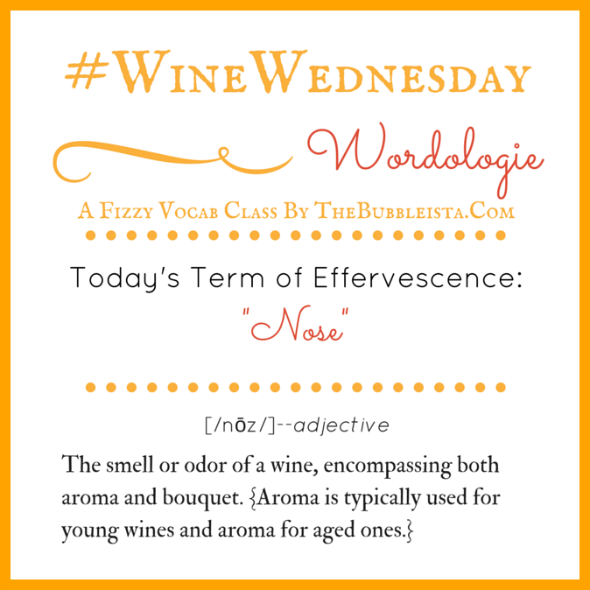
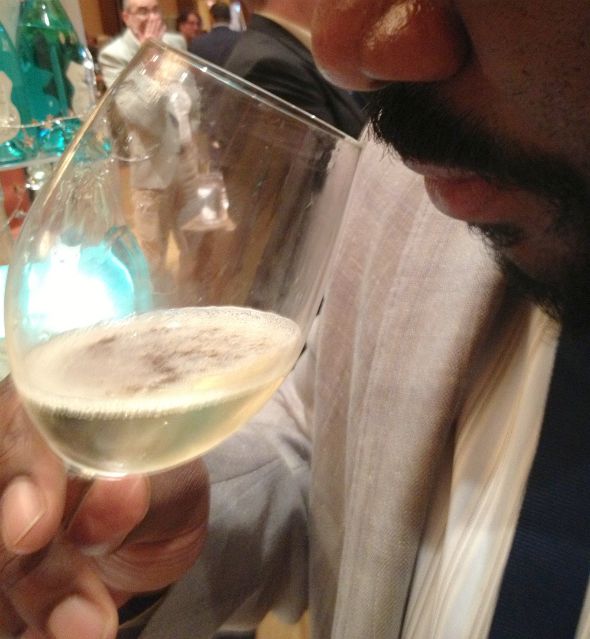
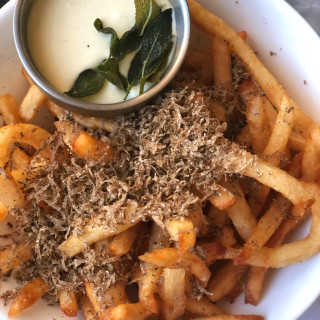
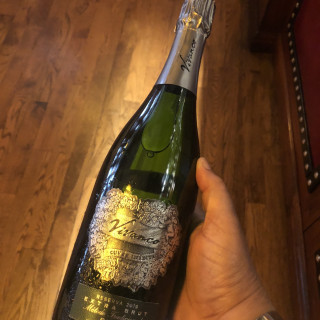
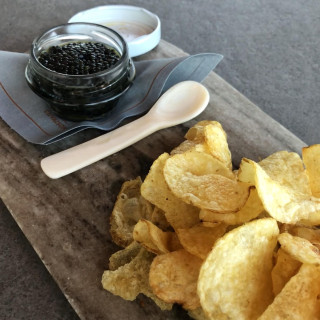



[…] there, my dears–time for another edition of Word Wednesday! I’m pushing pause on #Wordologie for just a moment {no worries; it WILL be back!} to share with you what I have been up to in my […]